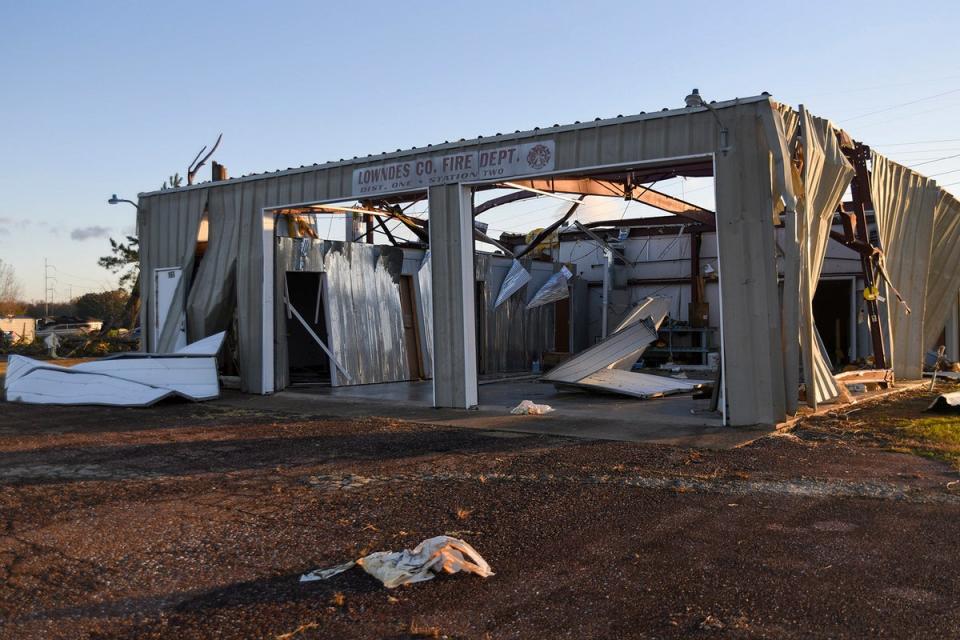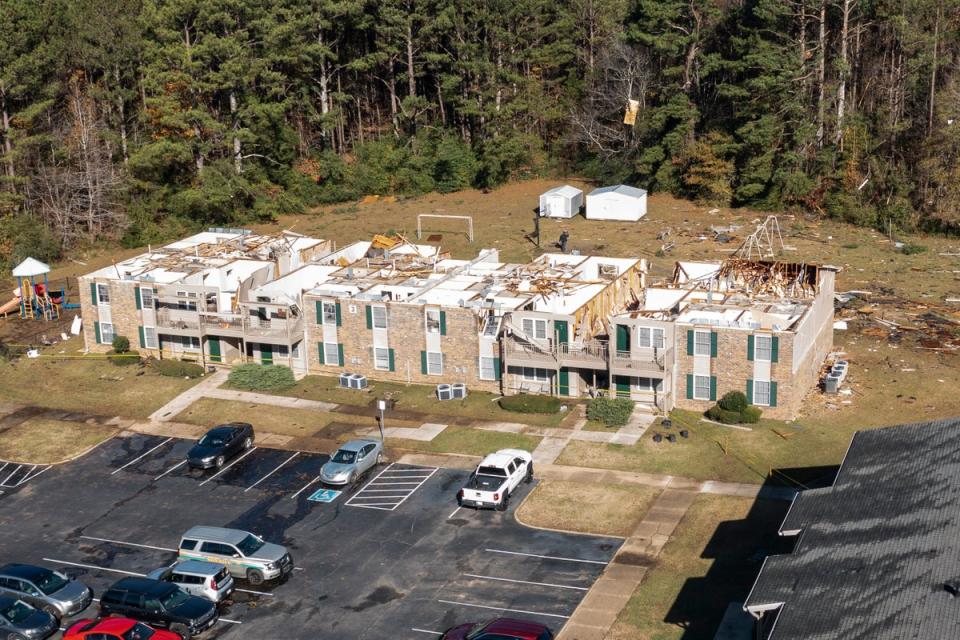Two dead in Alabama as tornadoes and severe weather rip through southern US
At least two people have been killed after powerful tornadoes and severe weather ripped through the southern United States on Tuesday and Wednesday.
The National Weather Service confirmed more than 20 tornadoes after dozens of warnings and watches were issued in Mississippi, Alabama, Arkansas, Louisiana, Georgia, Texas, Florida and Tennessee as the system shifted eastwards.
More than 40 million people were in the path of the severe weather which government forecasting agencies said would be a “particularly dangerous situation”.
Residents were warned to review emergency plans with forecasts showing the potential for strong tornadoes traveling across long distances.
Record high, balmy temperatures this winter in parts of the south have factored into the tornado outbreak. Recent analysis found that while all seasons are undergoing rapid change from the climate crisis, winter is warming the fastest across much of the US.
In Shreveport, Louisiana, the temperature soared to 81 degrees Fahrenheit (27.2 Celsius) on Tuesday, according to the National Weather Service, and broke a 70-year record. In Tyler, Texas, the mercury hit a record-breaking 82F (27.8C). Celsius).
The “threat for supercells capable of all severe hazards” continued into Wednesday, forecasters warned, including risk of severe flooding and tennis ball-sized hailstones.
Overnight on Tuesday, two people died in Alabama after a tree struck their mobile home, said emergency official Christina Thornton. There was also significant tornado damage in the Flatwood community, north of Montgomery, with police closing roads to allow for clean-up.
Ms Thornton told Fox Weather that the number of fatalies was unknown as search-and-rescue efforts to knock doors was being hampered by heavy debris and fallen trees.

Injuries were also reported in Mississippi and Louisiana after tornadoes touched down on Tuesday night.
The march of tornadoes caused widespread damage, obliterating trailer homes, ripping the roofs and sides from buildings, flipping vehicles and downing power lines.
In the west Alabama town of Eutaw, large sections of the roof were missing from an apartment complex, displacing 15 families in the middle of the night. Power lines and trees were “all over the road,” Eutaw Police Chief Tommy Johnson told WBRC-TV.
In Caldwell Parish, Louisiana, homes were smashed to smithereens, according to pictures from local news station KNOE. In Lowndes County, Mississippi, a fire station was extensively damaged from a possible Tuesday night tornado.
In the small town of Tchula, Mississippi, hail stones crashed against the windows of City Hall, as the mayor and other residents took cover during a tornado warning. “It was hitting against the window, and you could tell that it was nice-sized balls of it,” Mayor Ann Polk said after the storm passed.

More than 50,000 customers in Mississippi and Alabama lost power overnight. By Wednesday afternoon, some 11,000 customers in Alabama remained in blackout, according to poweroutage.us.
The severe weather was also impacting travel with more than 593 flights delayed and 43 cancelled across the US, according to Flightaware.
The link between tornadoes and the climate crisis remains heavily debated. In part this is because unlike longer-lasting events like heatwaves, tornadoes are tricky to study because they are relatively short-lived, and tend to appear in rural, less densely- populated areas. For decades, data largely relied on people spotting tornadoes and calling them into the National Weather Service.
But the body of research is growing. A study in 2014 from the National Severe Storms Laboratory found that in the past 50 years, clusters of tornadoes have become more common.
A separate 2018 study found that over the past four decades, “Tornado Alley” appears to be shifting to the east, away from typical paths through Kansas and Oklahoma, and to the areas where Friday’s outbreak struck.
With reporting from Associated Press

